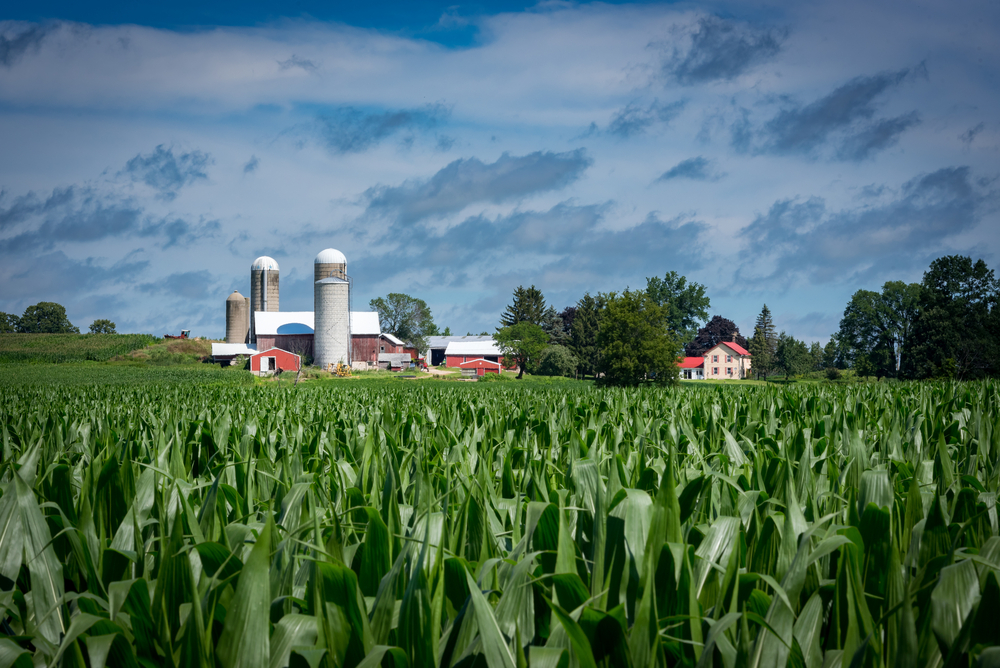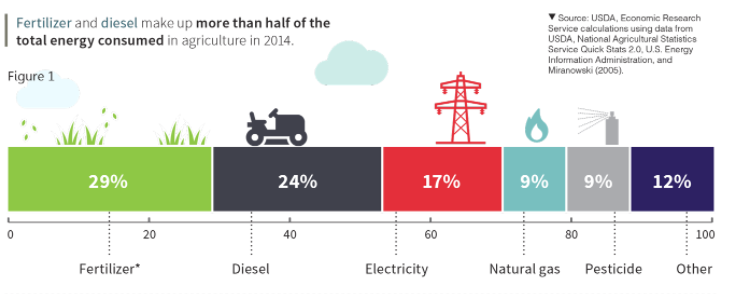The Farm Bill: Advancing Energy Efficiency in Rural America

The Farm Bill: Advancing Energy Efficiency in Rural America
Since the first Farm Bill in 1933, Congress has aimed to boost economies and improve lives in rural communities. Often overlooked, however, is the powerful role that energy efficiency can play in reaching these goals. Energy consumption is deeply embedded throughout the farm economy. The U.S. agriculture industry consumes approximately 1.7 quads of energy annually, the equivalent to the energy consumption of more than 40 million homes. Approximately 60 percent of this is direct energy consumption – generating high energy bills for farmers from machinery and equipment, lighting, heating, and other sources. The remaining 40 percent is consumed indirectly by using fertilizers, pesticides, water and livestock feed as well as the processing and distribution of products. Taken together, the direct and indirect costs can represent as much as half of a farm’s overall expenses. Using energy more wisely along the entire agriculture supply chain can reduce energy bills, helping farmers increase profits and competitiveness.

Recognizing the importance of energy costs to a farm’s bottom line, modern versions of the Farm Bill have included programs aimed at helping the agriculture industry and rural communities implement cost-effective solutions to their energy challenges. Farmers aren’t the only beneficiaries of these programs. Business owners, families and individuals across rural America can save energy and money using energy efficiency financed through these provisions. According to the U.S. Census Bureau (2010) almost 20% of the U.S. population is considered to live in a rural area, making them eligible for USDA assistance through Farm Bill programs, and rural households are responsible for 20% of total household energy consumption (EIA, 2009 RECS Survey Data). Manufacturing is also a large industry in rural areas, but many manufacturers miss the opportunity to use Farm Bill provisions to fund their efficiency improvements.
Where do the Opportunities Already Exist?
Energy Title
The Energy Title is the key title for enhancing energy efficiency in agriculture and throughout rural communities. The program that has made the largest impact on energy efficiency using Farm Bill funding is the Rural Energy for America Program (REAP). Agricultural producers and other rural businesses can use REAP to finance energy efficiency improvements to their operations. Additionally, the Sun Grant Initiative, while mainly focused on renewable energy projects, has funded projects with significant energy efficiency components built in. For example, the Pennsylvania State University’s Pennsylvania Renewable Energy Monitoring Network (PREMNET) is funded through the Sun Grant Initiative to monitor projects across the state, some of which integrate efficiency.
Conservation Title
Conservation has become increasingly important to stakeholders of the Farm Bill. While these provisions may not specifically focus on energy efficiency, many are created to reduce water consumption and waste. It takes a lot of energy to pump, treat and move the large quantities of water that the agriculture industry requires, so wasted water is wasted energy. The Environmental Quality Incentives Program (EQIP) provides financial and technical assistance for the planning and implementation of conservation practices across all resources, while the Agricultural Management Assistance (AMA) program provides technical and financial assistance to producers for many priorities including improving water management or irrigation structures.
Rural Development Title
The biggest impact the Rural Development Title has on energy efficiency is the authorization of the Rural Energy Savings Program that funds loans to help rural families and businesses implement energy efficiency. Another relevant provision is the Value-Added Agricultural Product Grants program that can be used for producing and marketing a value-added agricultural product, which can include those made with efficient technology.
Research Title
Research programs and grants funded by the Farm Bill support the national system of land grant universities that strive to improve agriculture productivity. An especially important aspect of this is the extension program that bridges universities’ research and the farmers who could implement the innovative farming practices and technologies they study that can reduce energy costs. This link could serve to provide funding for programs in the Research Title to farmers, business owners, families and individuals across rural America.
Horticulture and Organic Agriculture Title
Specialty crops – including fruits, vegetables, tree nuts, and horticulture and nursery crops – are often produced in greenhouses that require significant energy to maintain proper heating and ventilation. The Specialty Crop Block Grant Program and Specialty Crop Research Initiative both provide funding opportunities to enhance competitiveness and address the needs of the horticultural and specialty crop industry, including by increasing efficiency and productivity. Some examples of these programs in action include a project in California to more sustainably and efficiently protect grapes from spring frosts and another in Alabama to reduce energy costs for greenhouse vegetable growers.
How Do We Take Advantage of These Opportunities?
While these programs already exist, and are in use today, many are not being used to improve energy efficiency across rural America. The primary barrier to bringing these energy efficiency savings to farmers and rural communities is a lack of information. Many farmers, business owners, and households don’t know these programs exist or face barriers to accessing them. Similarly, many energy efficiency program managers that serve rural communities do not have the necessary expertise to help residents and business owners take advantage of Farm Bill funding. Protecting and expanding funding for these programs, spreading information across the community, improving access to programs, and implementing projects that can utilize funds are key to advancing energy efficiency across rural America.
STAY EMPOWERED
Help the Alliance advocate for policies to use energy more efficiently – supporting job creation, reduced emissions, and lower costs. Contact your member of Congress.
Energy efficiency is smart, nonpartisan, and practical. So are we. Our strength comes from an unparalleled group of Alliance Associates working collaboratively under the Alliance umbrella to pave the way for energy efficiency gains.
The power of efficiency is in your hands. Supporting the Alliance means supporting a vision for using energy more productively to achieve economic growth, a cleaner environment, and greater energy security, affordability, and reliability.



